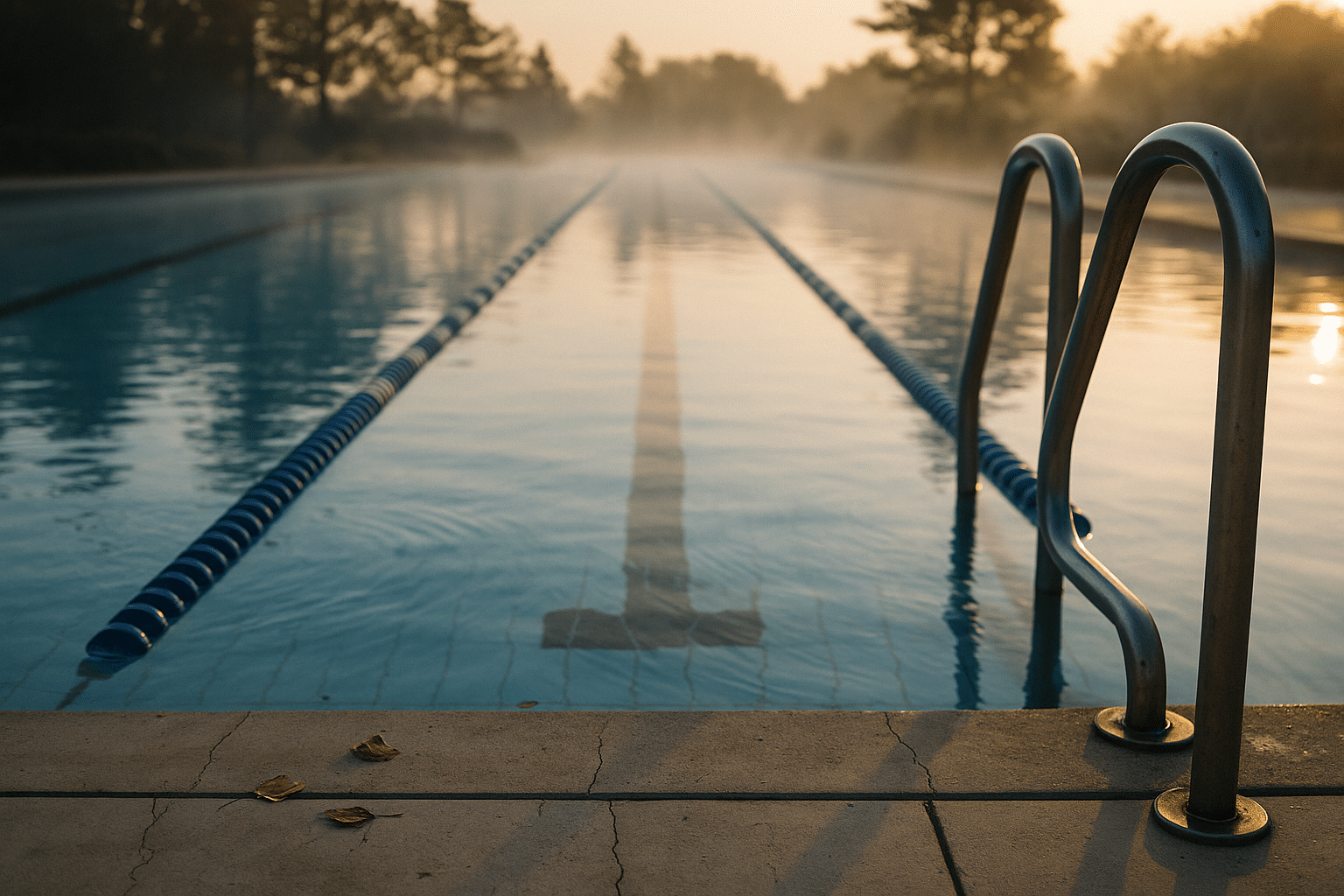
Explore the world of swimming
Swimming is one of the few lifelong activities that welcomes beginners and challenges seasoned athletes alike. It strengthens the heart and lungs, supports joints, and offers a meditative rhythm that can melt away stress. Whether you’re dipping into a neighborhood pool, gliding across a quiet lake at sunrise, or building endurance for an event, swimming offers a flexible path toward fitness, skill, and community.
Outline
– Why swimming matters: health, mental well-being, and accessibility for many ages and abilities.
– Technique fundamentals: efficient body position, breathing, and the four primary strokes.
– Training structure: how to plan sessions for different goals and experience levels.
– Safety and inclusivity: water safety, gear basics, and adaptive approaches.
– Places and culture: pools versus open water, etiquette, and environmental stewardship.
The science-backed benefits of swimming for body and mind
Swimming pairs full-body movement with the support of water, creating a distinctive training effect that is both vigorous and low impact. In chest-deep water, buoyancy can reduce effective body weight by more than half, easing stress on knees, hips, and the spine. That makes swimming a practical option for people managing joint discomfort, returning from some injuries under professional guidance, or simply seeking a cardio workout that is kinder to the body.
From a physiological standpoint, swimming can meaningfully improve cardiovascular fitness. Moderate freestyle often falls around 6–8 METs (metabolic equivalents), while butterfly can exceed 10 METs for trained swimmers. As an illustrative estimate, an individual weighing 70 kg swimming freestyle at 8 METs expends roughly 9–10 kcal per minute—about 300 kcal in a half hour—depending on technique efficiency and pace. Over time, regular sessions can enhance stroke volume of the heart, improve capillary density in working muscles, and raise aerobic capacity.
The neuromuscular benefits are equally notable. Unlike many land activities, swimming recruits major muscle groups of both upper and lower body in coordinated patterns: lats and shoulders drive the pull; core musculature stabilizes rotation; hips and legs contribute kick propulsion and body alignment. This balanced engagement can help address common imbalances created by sedentary routines, such as weak posterior chain or stiff hip flexors. Because water resists motion in every direction, it also provides uniform resistance that scales with speed—swim faster and the water “pushes back” more, a natural form of progressive overload.
Swimming is also widely reported to support mental well-being. The repetitive rhythm of strokes and breaths functions like moving meditation. Cool water can have a refreshing, mood-lifting effect, and many swimmers describe a “clear-headed” feeling after even short sessions. Research on exercise more broadly links regular moderate-to-vigorous activity with lowered perceived stress, better sleep quality, and improved cognitive function. While individual responses vary, many find the combination of gentle sensory input (water pressure, sound dampening) and aerobic effort uniquely calming.
Practical advantages round out the picture: swimming is adaptable for different life stages and fitness levels, it can complement strength or endurance programs, and it often becomes a social anchor through classes or community groups. In short, it delivers a rare blend of longevity, versatility, and measurable health return.
Mastering technique: body position, breathing, and the four primary strokes
Efficient swimming begins with body position. Streamline is the foundation: head aligned with spine, eyes angled down, hips high, and a long line from fingertips to toes. Water rewards small adjustments; even a slight lift of the head can sink the hips, increasing drag. Think of “swimming downhill,” pressing the chest to keep the legs light and close to the surface.
Breathing is both a timing and relaxation skill. In freestyle and butterfly, exhale steadily into the water and turn or lift just enough to sip air without interrupting momentum. For backstroke, maintain a neutral head and let the water support the skull, with a relaxed, regular breath cadence. Breaststroke coordinates inhale during the recovery (when the head rises) and exhale during the glide, emphasizing rhythm over force. Common pitfalls include holding the breath (which raises tension and buoyancy abruptly), over-rotating to breathe, and lifting the head forward rather than rotating it with the body.
The four primary strokes have distinct mechanics and energy demands:
– Freestyle (front crawl): Prioritize a high elbow catch, where the forearm becomes a long paddle. Roll from the core, not the neck, and keep a compact, efficient kick. Many swimmers benefit from bilateral breathing patterns (every 3 or 5 strokes) to balance rotation.
– Backstroke: Maintain stable hips with a gentle body roll. A relaxed, continuous flutter kick keeps the legs near the surface. Entry should be pinky-first, then a strong catch under the waterline.
– Breaststroke: Time is everything—kick and pull must coordinate to produce glide. Avoid a large, drag-heavy arm sweep; keep elbows in and press forward into a streamlined position after each kick.
– Butterfly: Use hip-led undulation. Arms recover over the water with relaxed shoulders; the two-beat kick supports the catch and the exit. Efficient butterfly depends more on rhythm and body wave than brute strength.
Drills help encode these patterns. A few targeted options:
– Freestyle: “Catch-up” (one-arm at a time) to refine timing; fingertip drag to encourage high elbows; 6-kick switch for rotation control.
– Backstroke: Single-arm with opposite arm at side to focus on catch; head-still kicking to stabilize alignment.
– Breaststroke: 3 kicks, 1 pull to emphasize glide; sculling in the catch phase to feel pressure direction.
– Butterfly: Body dolphin with arms at sides to groove undulation; single-arm butterfly to coordinate breath and timing.
Technique evolves with feedback. Video analysis or a coach’s eye can reveal small leaks—wide scissor kicks during freestyle breathing, elbow drop in the pull, or over-pressing the chest in butterfly. Addressing one or two cues at a time keeps practice productive and reduces fatigue from overthinking. Over weeks, these refinements compound, turning effort into smooth, economical motion.
Smart training plans: structuring sessions from beginner to performance
Effective swim training balances frequency, volume, intensity, and recovery. A simple framework for most adults is 2–4 sessions per week, each 30–60 minutes. Intensity can be guided by perceived exertion (RPE 1–10), heart rate where measured, or repeatability of pace. Many swimmers use a progression from easy aerobic work to threshold sets and shorter speed efforts, ensuring technique quality remains high even as intensity rises.
Each session can follow a clear pattern:
– Warm-up (5–15 minutes): Easy swimming, mixed strokes, and gentle drills to activate shoulders and hips.
– Skills block (5–10 minutes): Focused drills with short rest, emphasizing at most two cues.
– Main set (15–30 minutes): Aerobic to threshold repeats with consistent pacing.
– Cooldown (5–10 minutes): Easy swimming to normalize breathing and heart rate.
Sample sessions illustrate the approach. For a returning or beginner swimmer:
– Warm-up: 6 x 50 easy freestyle with 15–20 seconds rest; include relaxed backstroke or breaststroke.
– Skills: 4 x 25 catch-up, 4 x 25 kick on side (alternating sides).
– Main: 6 x 50 at steady, conversational pace (RPE ~5–6), aim for even splits.
– Cooldown: 100 easy mixed strokes. Total: ~1,100–1,400 meters depending on comfort, or adapt to yards.
For an intermediate fitness swimmer:
– Warm-up: 300 easy, then 4 x 50 build (each 50 slightly faster).
– Skills: 6 x 25 scull variations (front/mid/back) with 10 seconds rest.
– Main: 3 x (4 x 100) on a manageable interval; hold a pace you could sustain for ~20 minutes (RPE 6–7); 1 minute easy between rounds.
– Finisher: 8 x 25 fast with full recovery.
– Cooldown: 200 easy. Total: ~2,000–2,600.
For performance-focused training (e.g., preparing for long-course events or open water):
– Warm-up: 600 as 200 swim, 200 drill, 200 pull.
– Skills: 8 x 50 as 25 technique focus + 25 swim, moderate.
– Main: Threshold set such as 5 x 400 holding near sustainable hard pace (RPE 7–8) with short rest; aim for consistent or slightly descending times. Follow with 12 x 50 strong (RPE 8–9) with generous rest to keep form sharp.
– Cooldown: 300 recovery. Total: ~4,000+, adjusted to experience.
Progression should be gradual. Increase total weekly distance by roughly 5–10% when you feel recovered, and schedule a lighter week every 3–4 weeks. Include varied strokes to reduce overuse strain and develop balanced capacity. Strength and mobility work on land—especially rotator cuff conditioning, thoracic mobility, and hip stability—can support resilient shoulders and better water position. Above all, let technique quality guide intensity; fast but sloppy reps often ingrain habits that cost speed later.
Safety, accessibility, and gear essentials for confident swimming
Water safety begins with preparation and awareness. Whenever possible, swim in supervised settings and understand local conditions. In pools, follow posted rules and lane etiquette; in open water, study wind, temperature, visibility, and potential hazards like currents or boat traffic. Communicate your plan with someone and consider a brightly colored tow float in open water for visibility where permitted.
Key safety reminders:
– Never swim alone in open water; use a buddy system.
– For rip currents at beaches, stay calm and swim parallel to shore to exit the flow before angling back.
– Cold-water precautions: Wear appropriate thermal protection, monitor for early signs of cold stress (shivering, numb fingers, sluggish strokes), and exit early if needed.
– Hydrate and protect skin; even cool pools can lead to dehydration over longer sessions.
Accessibility has expanded with adaptive options for all ages and abilities. Shallow-water classes help adults learn fundamentals without fear. Many facilities offer ramps, pool lifts, and warm-water programs for mobility challenges. Floats, buoyancy belts, and modified strokes allow safe participation while building confidence. Activity can be tailored for pregnancy, older adults, and those with certain chronic conditions—always with medical guidance where appropriate and pacing that honors how the body feels on a given day.
Basic gear supports comfort and skill development without being complicated:
– Goggles: Protect eyes and improve line-of-sight; choose a fit that seals gently without excessive pressure.
– Swim cap: Helps manage hair and reduces drag; also improves visibility in open water.
– Fins: Short-blade fins can reinforce kick rhythm and ankle mobility when used sparingly.
– Pull buoy: Isolates the upper body to focus on catch and rotation while resting the legs.
– Kickboard: Targets leg endurance and body position awareness.
– Snorkel: Enables steady breathing during technique drills, allowing attention on catch and alignment.
Hygiene and etiquette contribute to a positive shared space. Rinse before entering, avoid strong fragrances, and trim nails to protect equipment. Share lanes courteously by splitting or circling as agreed, and start repeats with spacing to prevent crowding. If pain arises—especially sharp shoulder discomfort—ease off and troubleshoot technique or consult a professional. These habits create a safe, welcoming environment where more people can enjoy the water with confidence.
Pools and open water: environments, ecology, and the culture of swimming
Pools offer predictable conditions—lane lines, consistent depth, clear markings—which make them ideal for skill acquisition and precise pacing. The controlled environment allows for structured sets, interval timing, and immediate technique feedback. Temperature is typically regulated, lighting is uniform, and lifeguard supervision adds a layer of safety. For goal-oriented training or a time-limited lunch break, a pool session is often the most reliable option.
Open water provides a different kind of richness. Lakes, rivers, and the sea introduce variables—chop, currents, and sighting—that build adaptability. Without walls, pacing shifts to continuous effort, and navigation adds a mental component: lifting the eyes periodically to sight landmarks, choosing lines that avoid glare or surface clutter, and adjusting stroke rate to conditions. The sensory experience is vivid: the low thrum of waves, the sparkle of sun on ripples, the gentle pull of a current. It can feel like reading the weather with your body, responding to each subtle change.
Ecology matters in both settings. Simple habits help protect waterways and community facilities:
– Rinse gear after open-water swims to prevent transferring invasive species between lakes or rivers.
– Use reef-considerate sun protection and avoid entering sensitive areas such as roped-off nesting zones.
– Pack out all trash and be mindful of shoreline vegetation.
– Respect pool rules that maintain water quality, such as showering before entry and proper use of swim diapers for children.
Swimming culture spans casual meetups to organized events. Community groups host technique clinics, timed challenges, and social swims that make training more engaging. Masters programs welcome adults of varying speeds, offering structured workouts and camaraderie. Local charity swims and seasonal lake crossings provide friendly goals that transform practice into shared accomplishment. Lane etiquette and good communication keep everything flowing; a simple nod or a quick “mind if we circle swim?” can set the tone for a cooperative session.
Choosing between pool and open water often comes down to objective and mood. On days when precision matters—working on pacing, drills, or stroke count—the pool shines. When you crave a sense of exploration and resilience, open water delivers. Many flourishing swimmers move between both worlds, taking the steady discipline of lanes and blending it with the spacious mindset that only a wide horizon can offer.
Conclusion: chart your course, one stroke at a time
For newcomers, start small—short, frequent sessions that prioritize comfort and technique. For returning swimmers, rebuild rhythm with mixed-stroke aerobic work before adding speed. For performance-focused athletes, consistency and measured progress will carry you far. Across all levels, safety, patience, and curiosity matter more than raw effort. Swimming rewards attention to detail, turning each lap into a lesson. With a plan in hand and water ahead, you can craft a practice that fits your life—restorative some days, ambitious on others—and discover how far steady strokes can take you.


